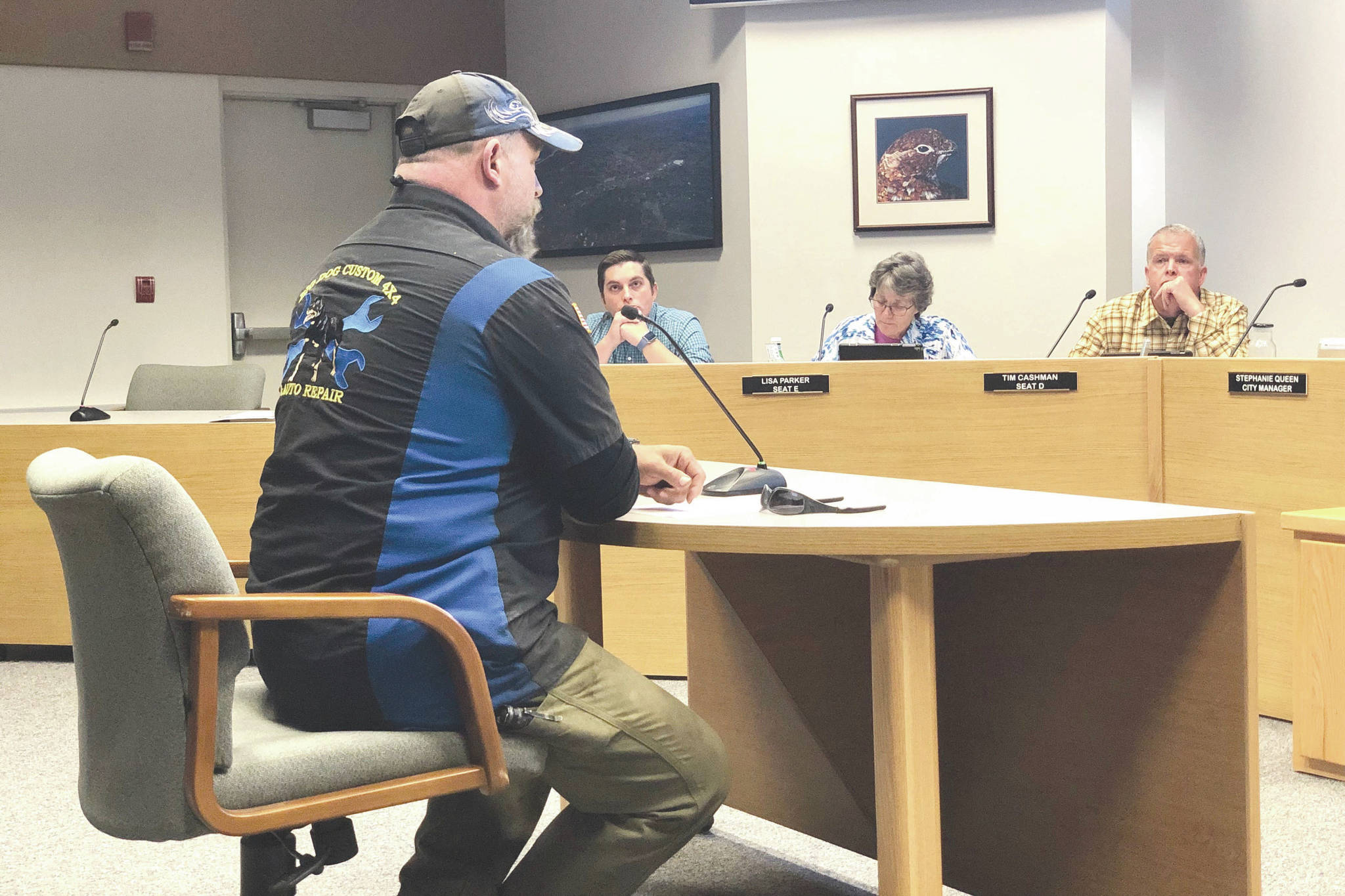The City of Soldotna voted to move forward with its efforts to annex areas near its city limits, with the exception of the areas along Kalifornsky Beach Road.
The city council approved a substitute resolution, which removes areas 4 and 5 — the two annexation areas along K-Beach Road — from the petition and authorizes the city manager to send that amended petition to the Local Boundary Commission, the state entity with the authority to change and create municipal boundaries.
The areas in the substitute resolution approved to move forward in the annexation process include an area near the Soldotna Airport along Funny River Road; an area including and near the Tsalteshi Trails and Skyview Middle School; an area that includes a business corridor along the Kenai Spur Highway, ending near Big Eddy Road; and an area along Funny River Road.
Council member Tim Cashman sponsored the substitute resolution. He said there are things that the city isn’t ready to deal with.
“I’m aware there are concerns in the K-Beach area, that’s why I wanted to bring it forward,” Cashman said during the meeting.
The council voted unanimously to send their amended petition to the state.
Council member Tyson Cox was barred from voting on the original resolution, due to a conflict of interest since he owned property in the K-Beach area. Since the K-Beach area was removed from the petition, Cox was allowed to vote.
Members of the public who spoke during the resolution’s public hearing Thursday night said they weren’t satisfied with the city’s substitute resolution. Residents in the annexation areas encouraged the council to postpone the vote until after the election of new city council members, and after Soldotna’s special election for a new mayor in December.
“Why does this have to happen now?” Borough Residents Against Annexation President Matthew Law asked the council Thursday night.
In June 2018, the Soldotna City Council passed a resolution to start drafting a petition to annex seven areas adjacent to the city limits.
The action was postponed two weeks ago at the last Soldotna City Council meeting. During the Sept. 12 meeting, Soldotna City Manager Stephanie Queen told the council and the audience in the council chambers that several possible amendments to the petition were presented to the administration, and more time would be necessary to implement any changes to the petition.
The petition to annex areas around the city has seen backlash from area residents. In a Soldotna city public hearing held Sept. 7, more than 30 residents spoke against the city’s efforts to annex, while only one resident spoke in support.
In the petition, the city said it’s hoping to annex nearby areas as a way to respond to growth and development and to more accurately align the city’s corporate boundaries with the community that has developed since the city’s incorporation in 1960.
Through annexation, Soldotna will have the opportunity to glean millions in tax revenue from additional businesses and residents.
Soldotna said annexation could benefit residents by giving them a voice in city government and lowering property tax rates. Residents in Soldotna pay 8.06 mills, or 0.9 mills less than the tax rate paid by borough residents (8.96 mills) within the territory proposed for annexation, according to the petition.
Residents being annexed would also have access to city services, including parks and recreation, a library, animal control, water and waste water utilities, comprehensive zoning, economic development incentives, local police protection and building code review and inspections for commercial and residential construction.
Residents in the areas proposed for annexation have said they would like to vote on the matter. State law allows municipalities to expand their boundaries through the legislative review process or through voter approval.
The legislative process requires municipalities to send a petition to the Local Boundary Commission, and from there the Local Boundary Commission may present proposed changes to the Legislature during the first 10 days of any regular session. Unless the recommendation is denied, any changes will be approved 45 days after the initial presentation or at the end of the session, whichever comes first.

